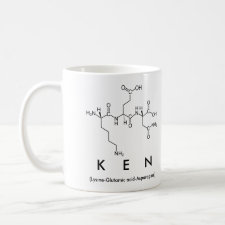
Authors: Umpleby RJ, Rushton GT, Shah RN, Rampey AM, Bradshaw JC, Berch JK, Shimizu KD
Article Title: Recognition directed site-selective chemical modification of molecularly imprinted polymers.
Publication date: 2001
Journal: Macromolecules
Volume: 34
Issue: (24)
Page numbers: 8446-8452.
DOI: 10.1021/ma010903s
Abstract: Demonstrated is the site-selective chemical modification (SSCM) of molecularly imprinted polymers (MIPs). In this strategy, MIPs are selectively chemically modified to improve the ratio of high-affinity to low-affinity binding sites and therefore the overall binding characteristics of the material, This was accomplished by preferentially eliminating the low-affinity binding sites by esterification with diazomethane or phenyldiazomethane. Selectivity in the esterification reaction was achieved using a guest molecule as an in situ protecting group that preferentially shields the high-affinity sites and leaves the low-affinity sites exposed toward reaction. The corresponding shifts in the populations of high- and low- affinity sites were quantified using affinity distribution analysis, which quantitatively measures the heterogeneous distribution of binding sites in MIPs as number of binding sites (N) with respect to binding affinity (K). Using affinity distribution analysis, the SSCM strategy was shown to improve the percentage of high-affinity sites in a methacrylic acid (MAA)/ethylene glycol dimethaerylate (EGDMA) matrix, imprinted with ethyl adenine-9-acetate (EA9A) in acetonitrile. The effects of different solvents and concentrations of guest molecule on the SSCM also were examined. The greatest improvements due to SSCM were observed when carried out in the imprinting solvent (acetonitrile). The demonstrated SSCM methodology is complementary to existing strategies for improving MIPs and thus can be utilized in tandem to improve the binding characteristics of MIPs



Join the Society for Molecular Imprinting

New items RSS feed
Sign-up for e-mail updates:
Choose between receiving an occasional newsletter or more frequent e-mail alerts.
Click here to go to the sign-up page.
Is your name elemental or peptidic? Enter your name and find out by clicking either of the buttons below!
Other products you may like:
 MIPdatabase
MIPdatabase









